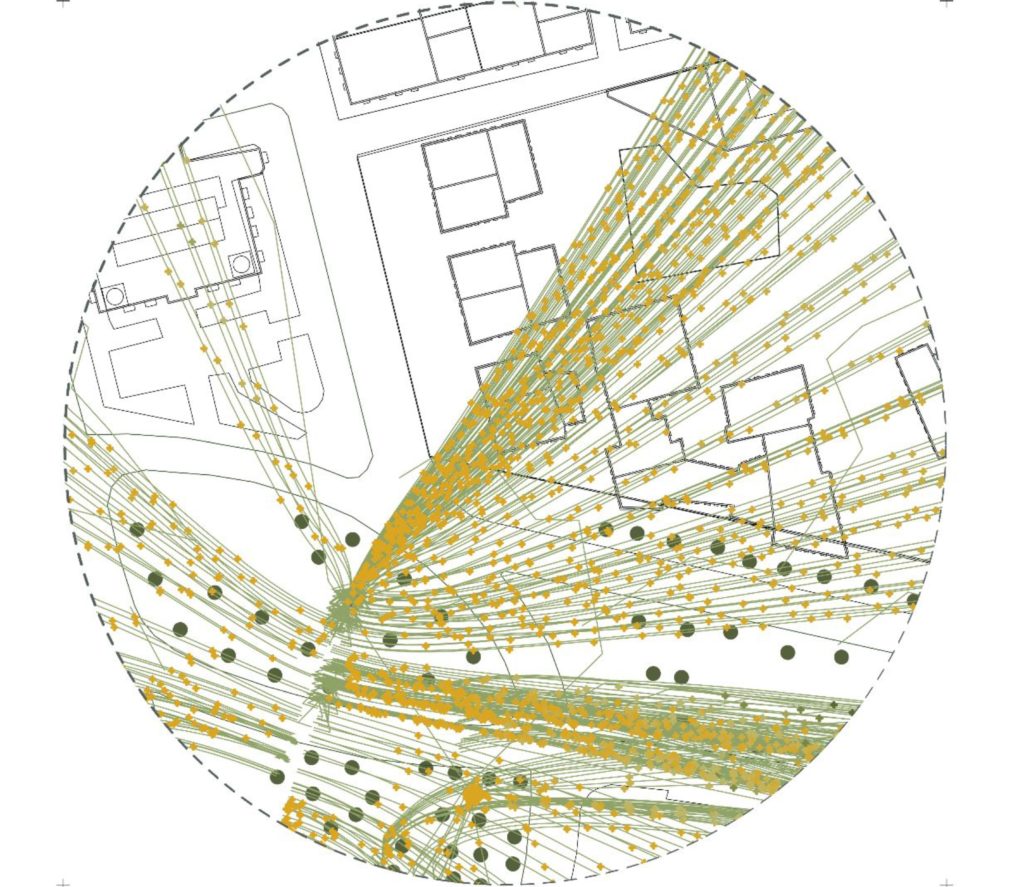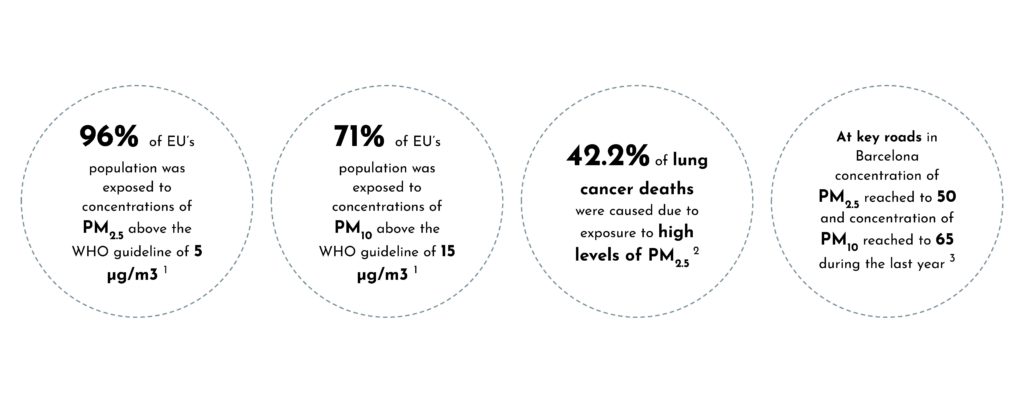
However, particulate matters are an important source of nutrient for the vegetation in the urban environment.
Particulate matters are a vital nutrient for vegetation in our urban environment, and thus a key part of our ecosystem. The ecosystem we inhabit is formed through complex networks between all the particles; the design approach for the urban ecosystem should be formed through a scientific parameter based algorithm. “AIReclaim” is the exploration of an urban typology using agent-based modelling to create a growth pattern for vegetation in a micro-climatic approach. The algorithm is based on the parameters of particulate matter concentration, environmental conditions and accumulation capacity of the existing vegetation in the urban fabric.
Particulate Matter and Vegetation
The relationship between particulate matter and vegetation is through different stages of reactions. the main process is formed of 2 stages where the first one is the formation of the particulate matter and the second stage is the re-metabolisation process.
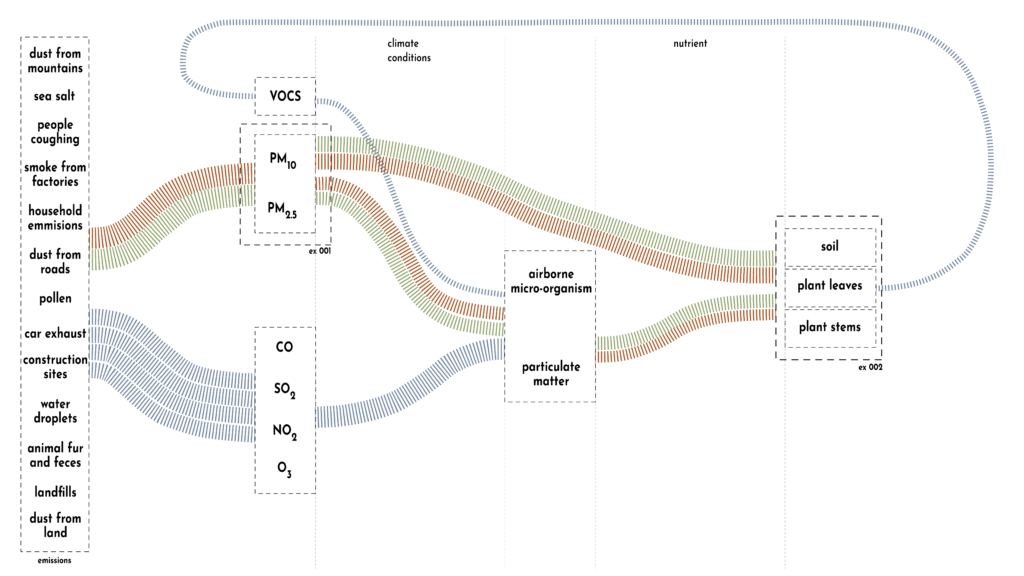
Zooming into the first stage is the primary resource of emissions from humans, the sea and mountains, the factories and cars form particulate matter as well as gases which through climatic conditions such as rain and condensation form new particles and airborne microorganisms. These microorganisms interact with vegetation in the urban environment through the leaf, the stem and the roots.
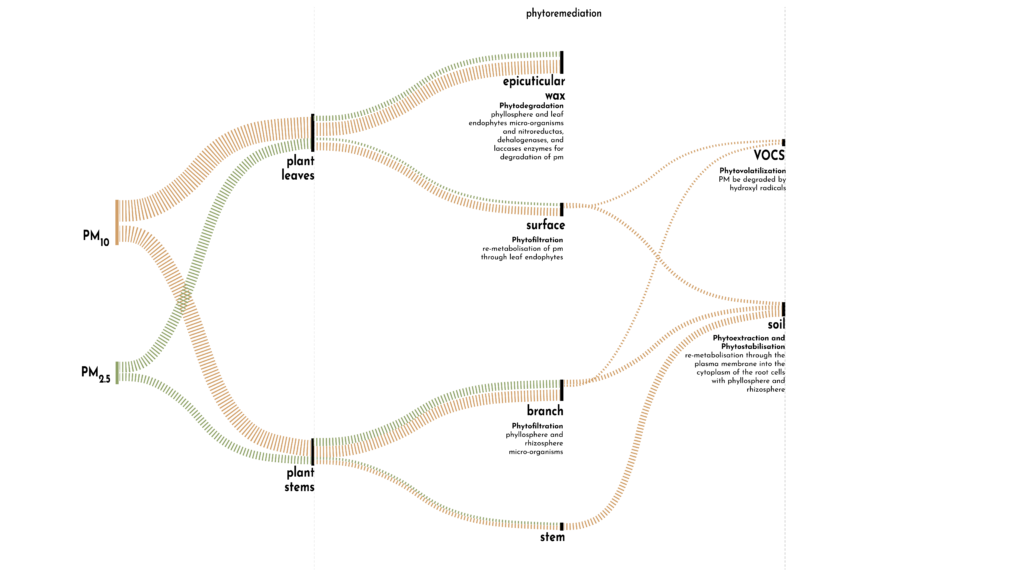
Vegetation
The second stage of re-metabolisation process which is happening in different parts of the plant. The leaf is an important part of the plant for phytoremediation as there is a direct contact with the air. however, all plants have different accumulation capacities.
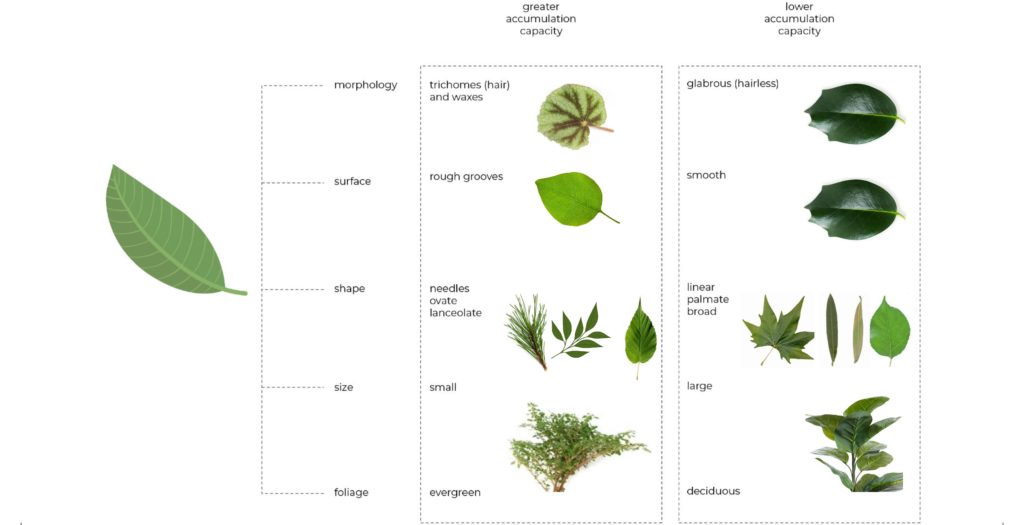
A selection of plants were made with different leaf characteristics of high accumulation to understand the impact each of the characteristics has in the accumulation capacity. There is a selection of plants with many trichomes and big or small leaves as well as glabrous but needle leaves. Additionally 4 species of Tillandsia were selected to analyse their living conditions as well as accumulation of pm.
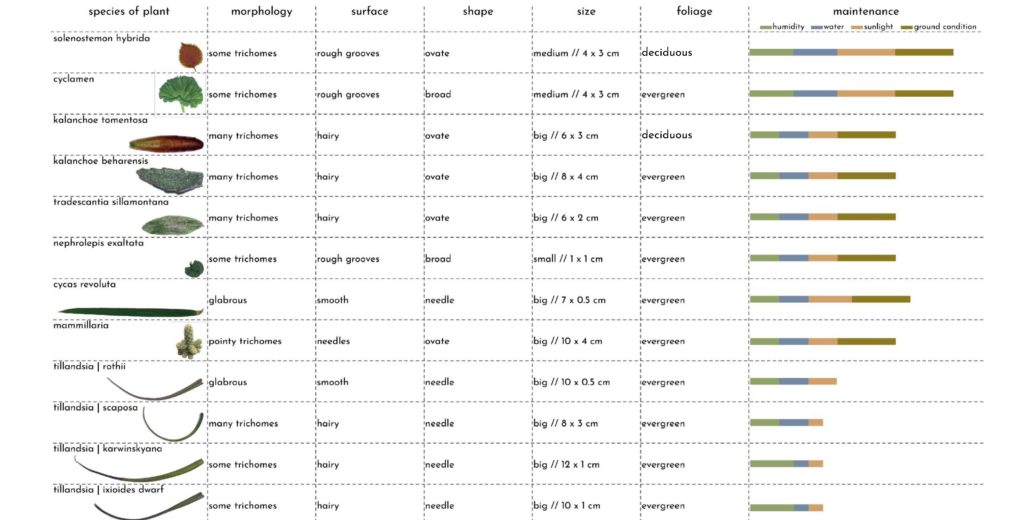
The selection of plants were washed and placed in an outdoor environment for direct exposure with the particles. The leaves are later on prepared for microscopy imaginary to visualise the particles on the leaf surface.
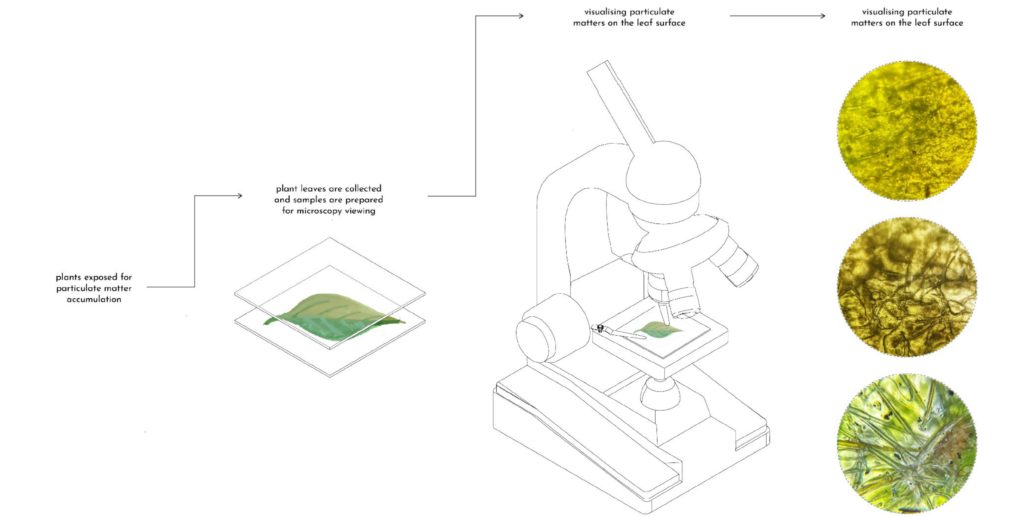
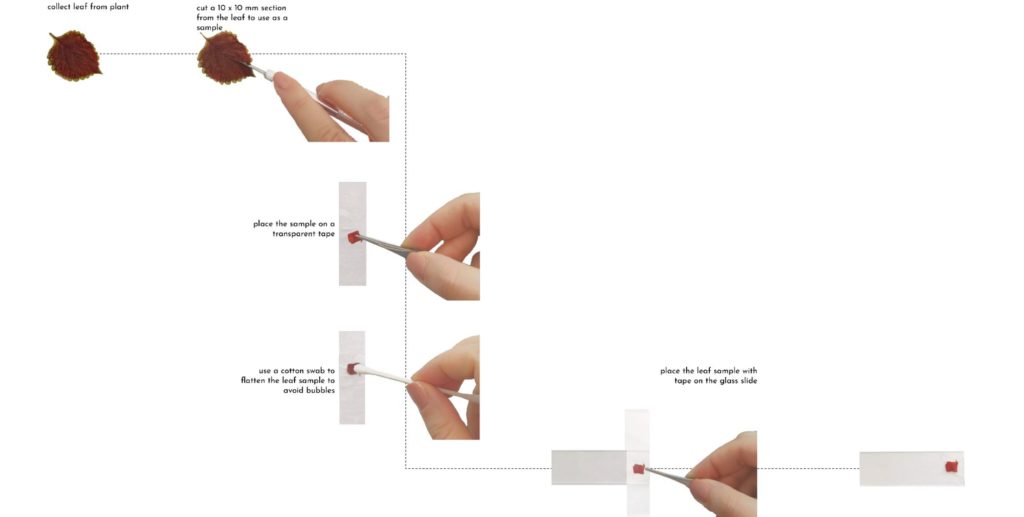
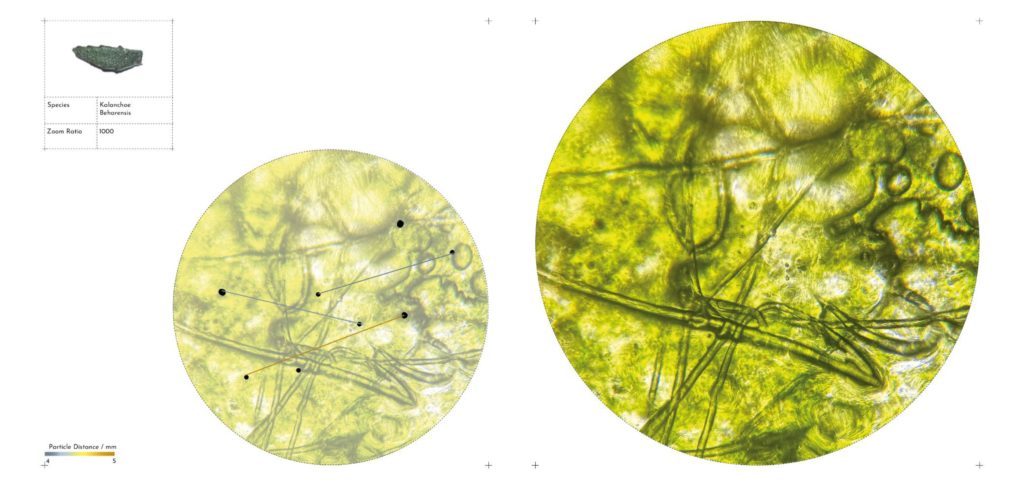
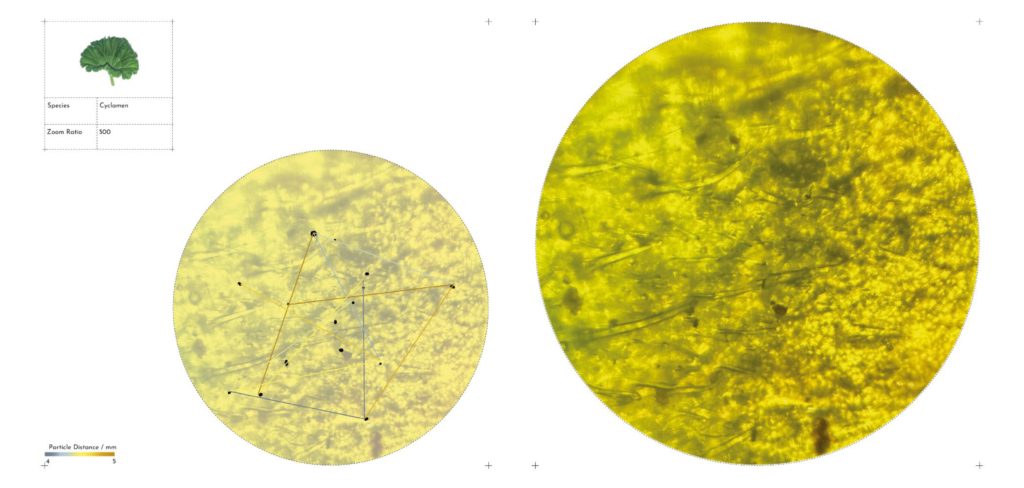
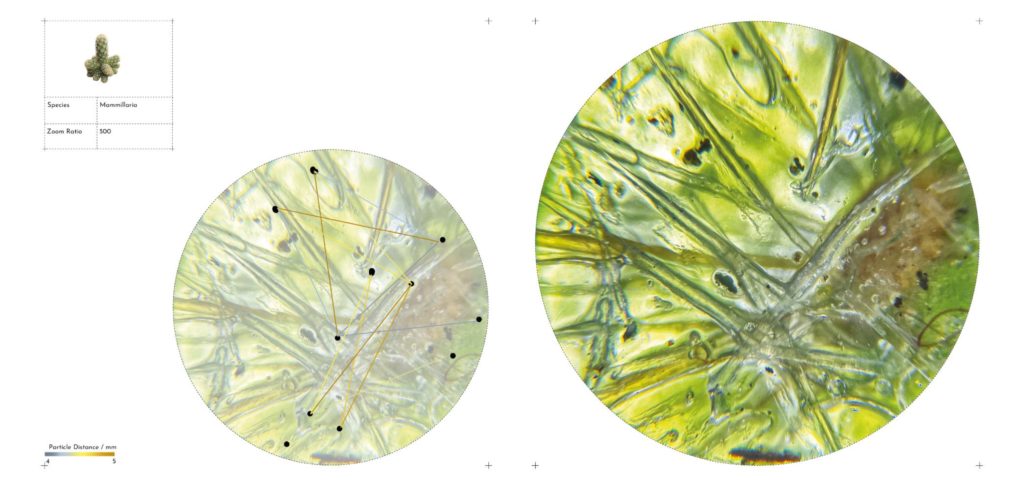
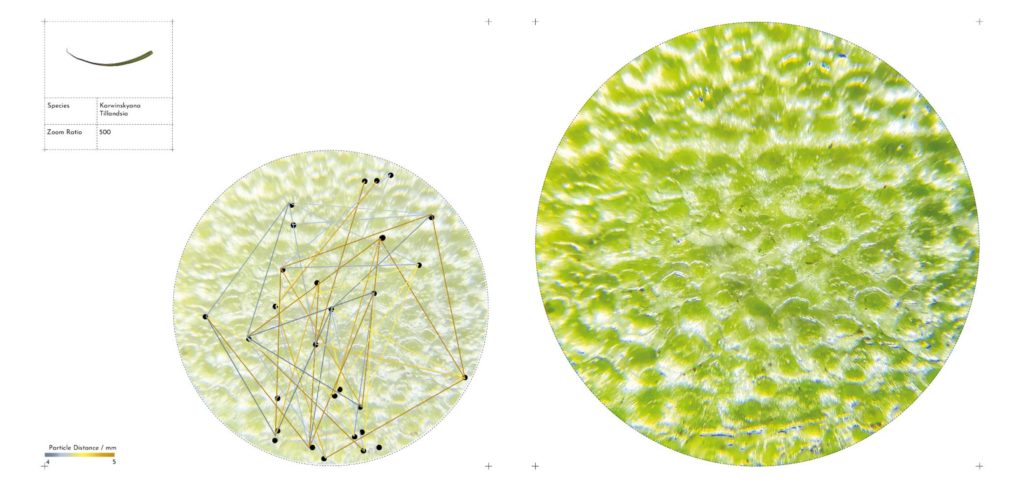
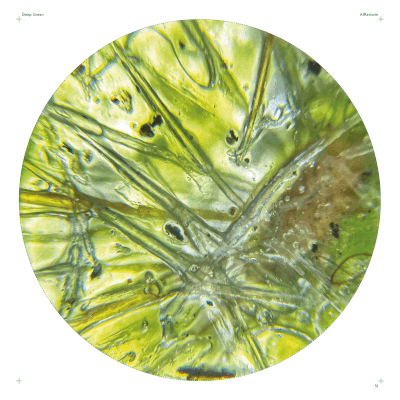
How do these particulate matters inhabit our urban environment?
Particulate Matter
The 500 m radius from home was identified and later a path was determined to walk at 10 am for three days to measure the particulate matter concentration.

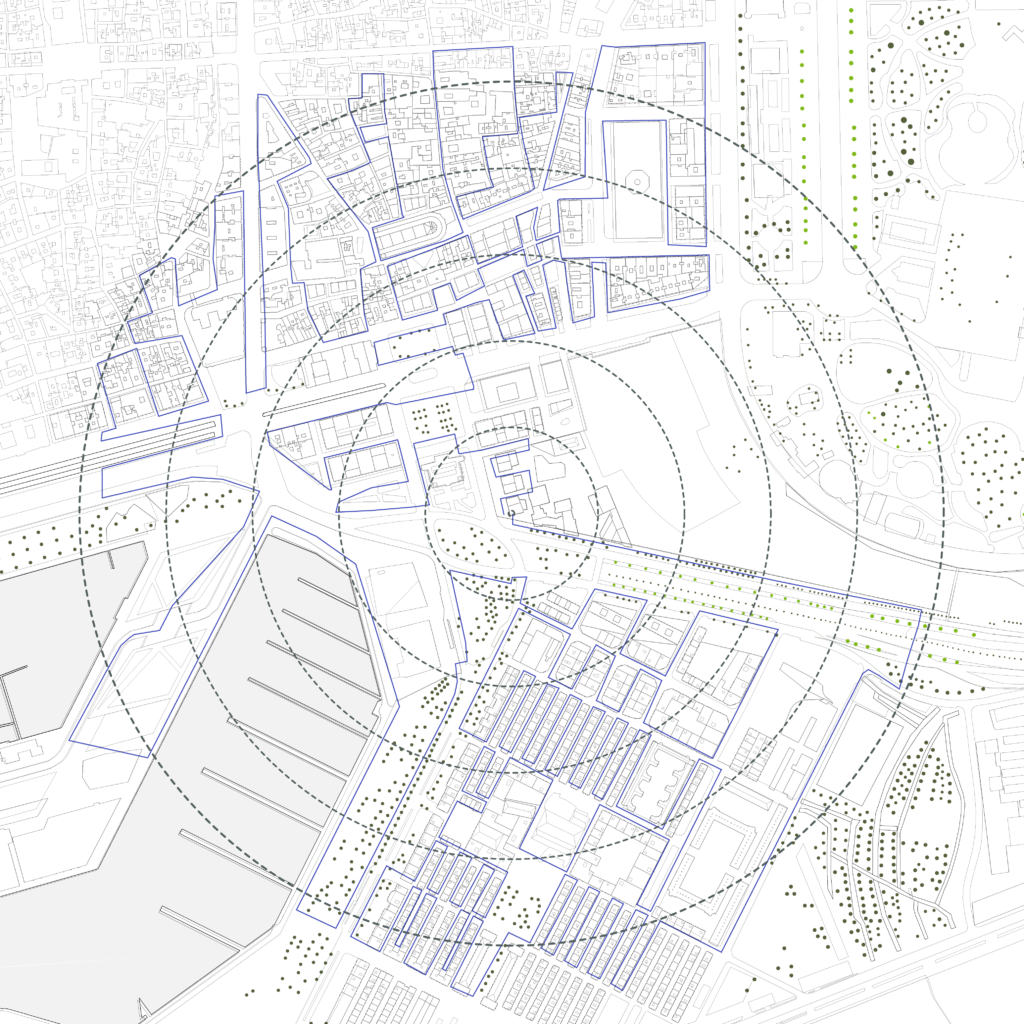
Wednesday 25th January
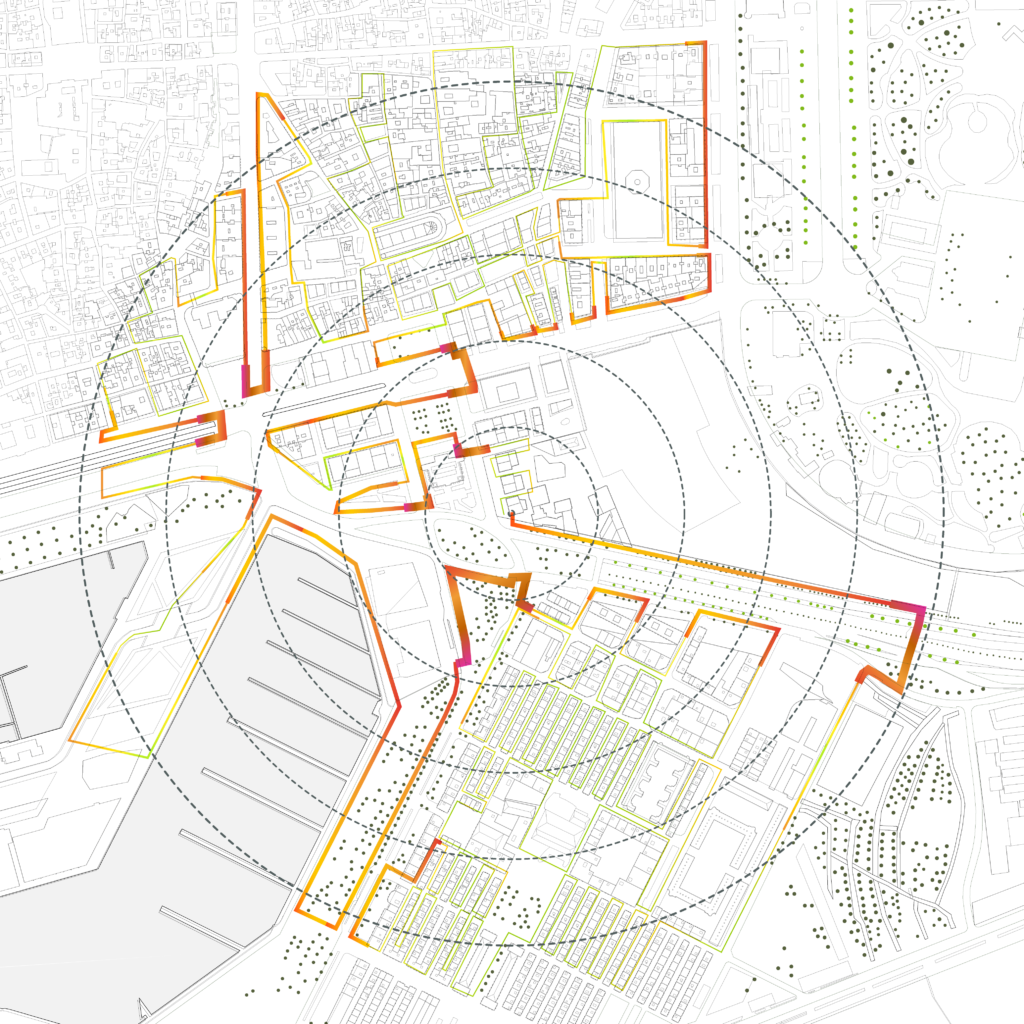
Friday 27th January
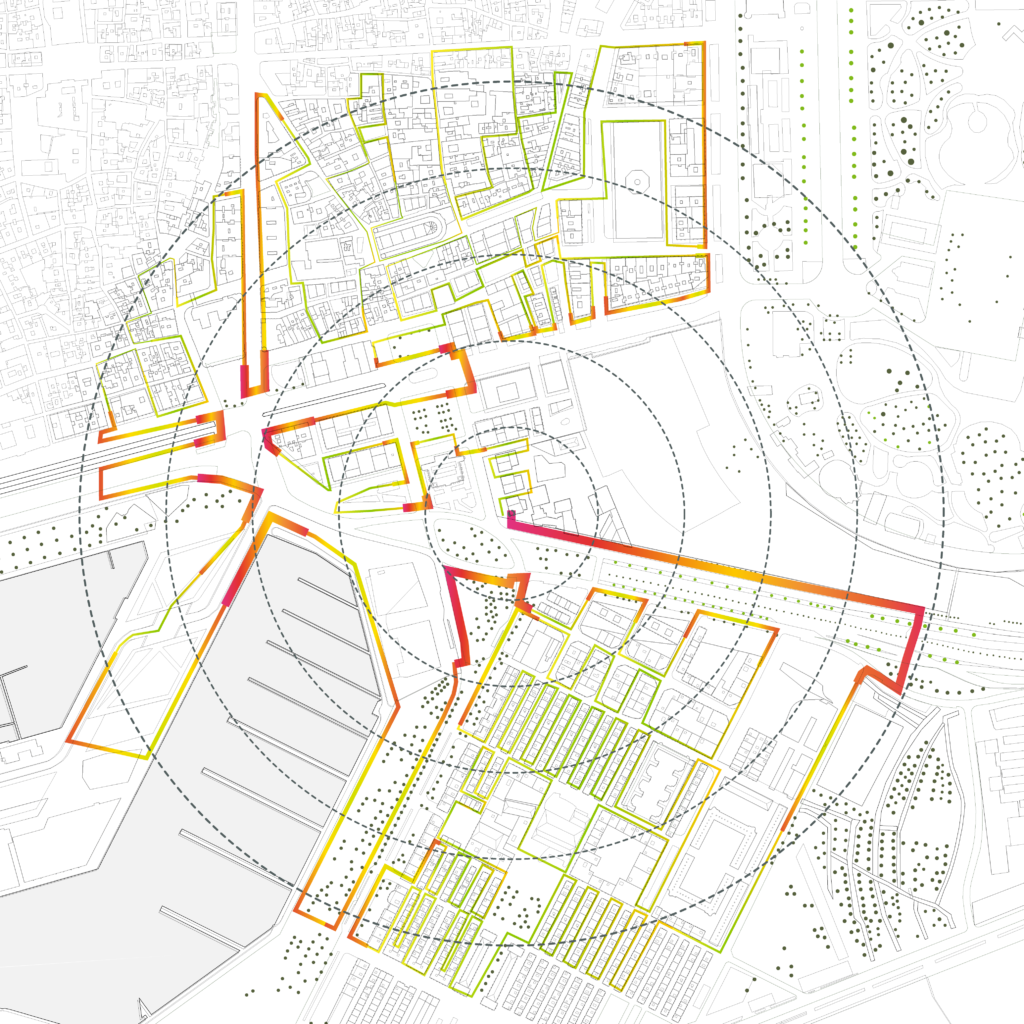
Sunday 29th January
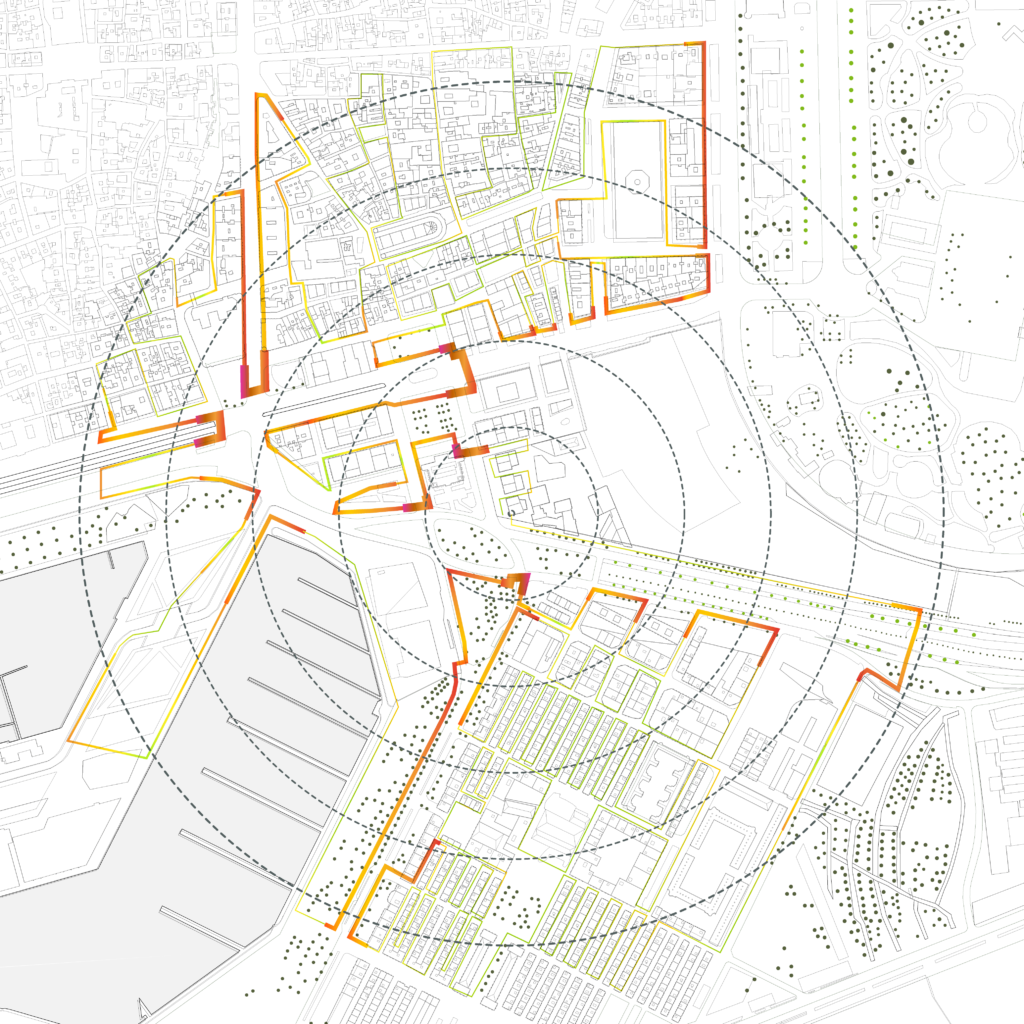
To be able to better understand the complexity in the urban environment the layers of the vegetation, the pm levels were overlapped where we can see that there is constant change. In the case study area currently there are only 2 species of pm accumulating vegetation located only in small areas.
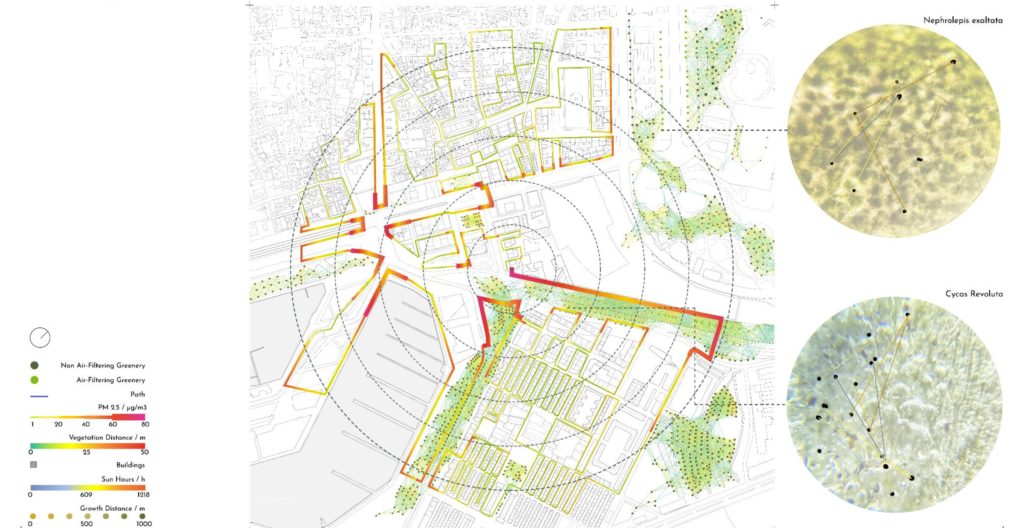
Complexity in Urban Design
The traditional way of how we think about cities and urban typologies create solid boundaries in the urban environment.
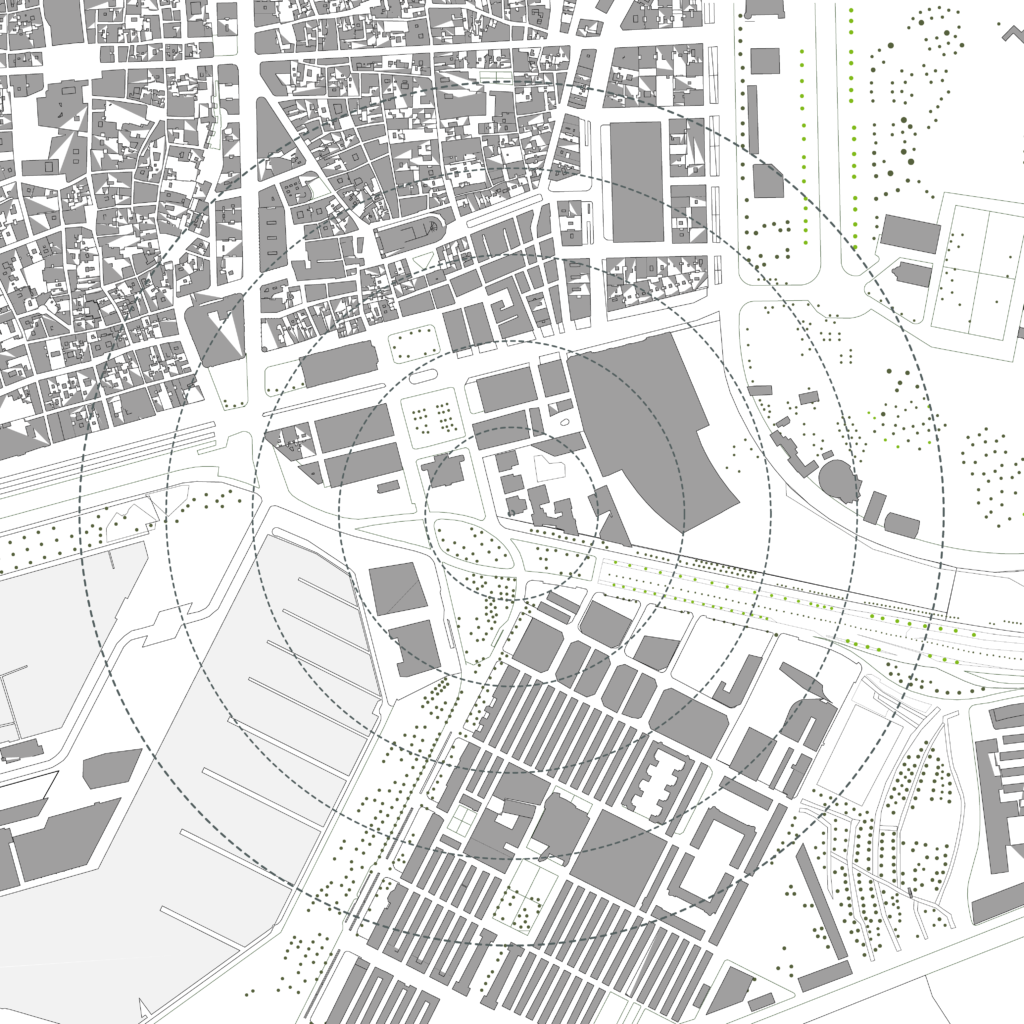
However, through the research we understand that the ecosystem we inhabit does not have solid boundaries so we have to start thinking about cities without having the boundaries between the solid and the void or the green and the non-green.
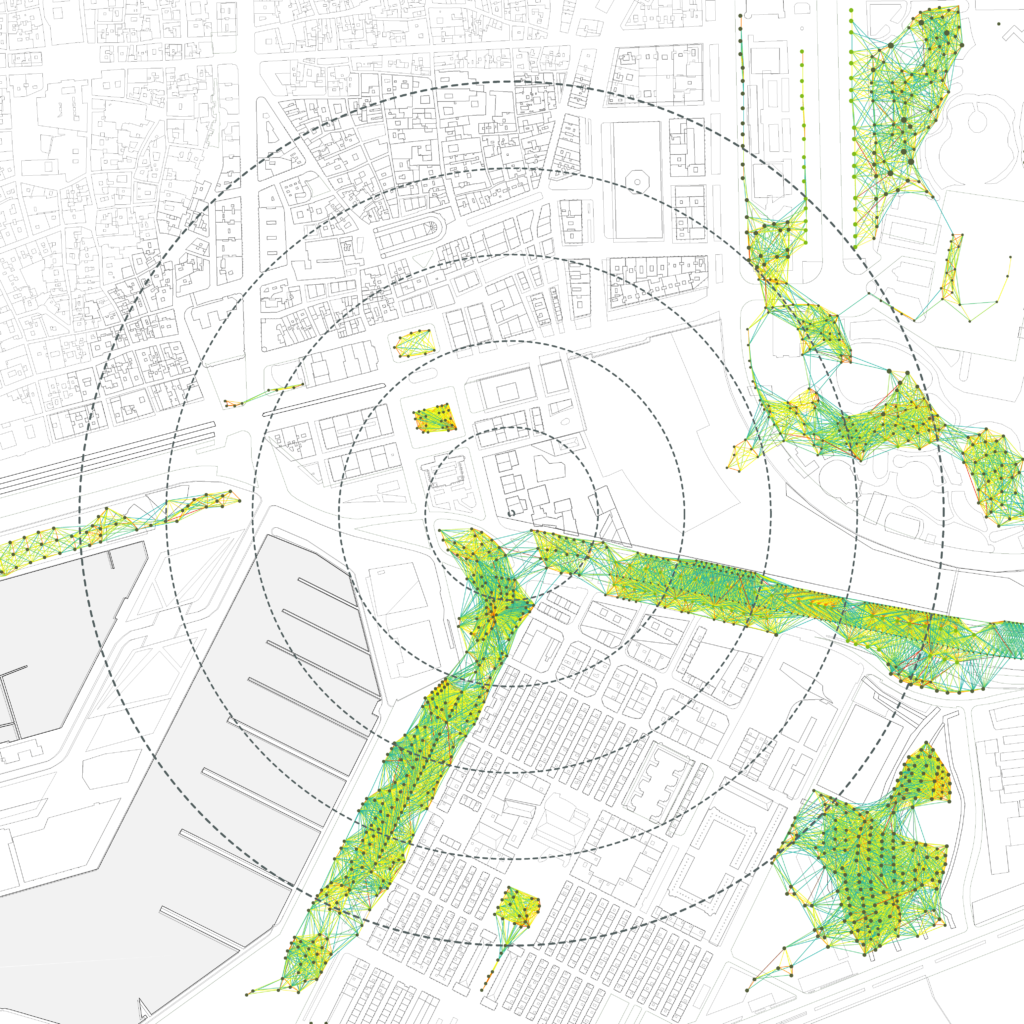
Using an agent based algorithm with particulate matter levels, particulate matter accumulating vegetation on site for designing a new approach.
High Particulate Matter Concentration Area for Main Growth
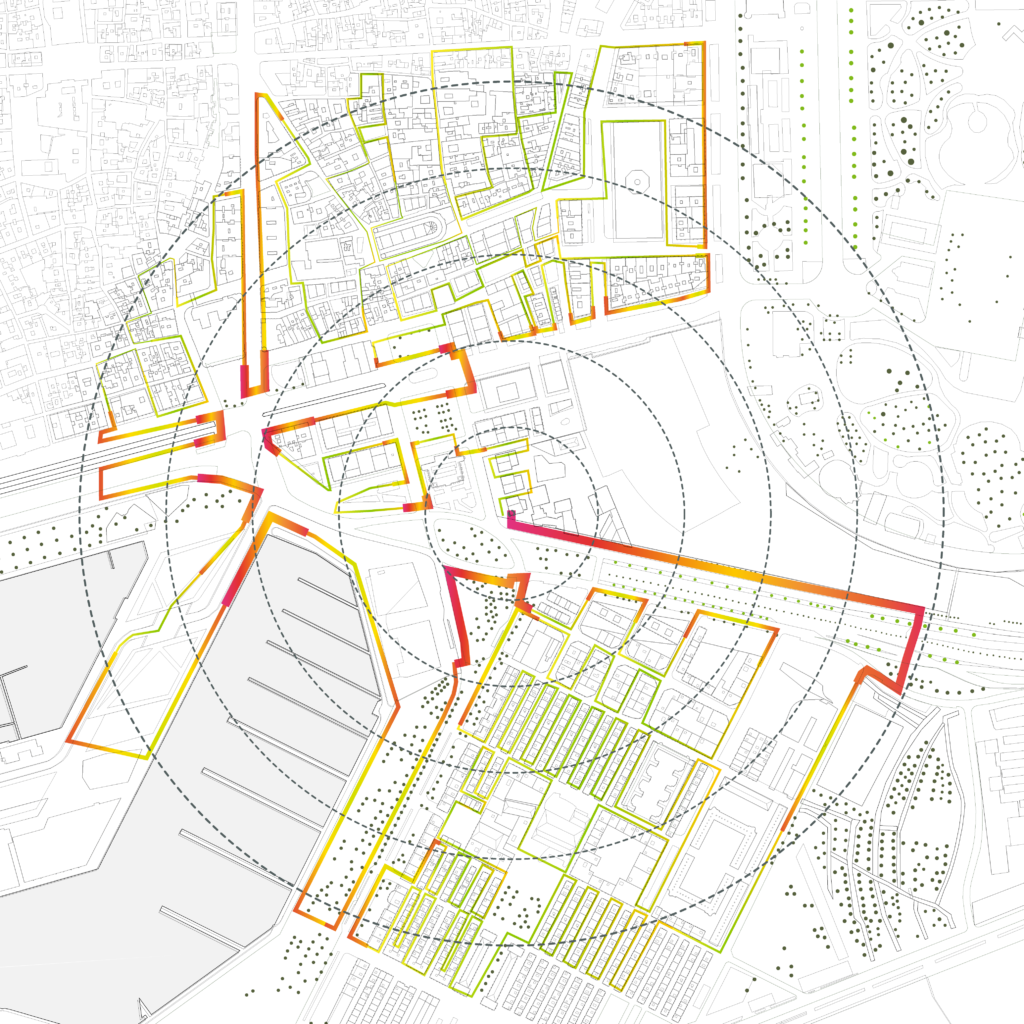
Existing Vegetation for Growth Start Points
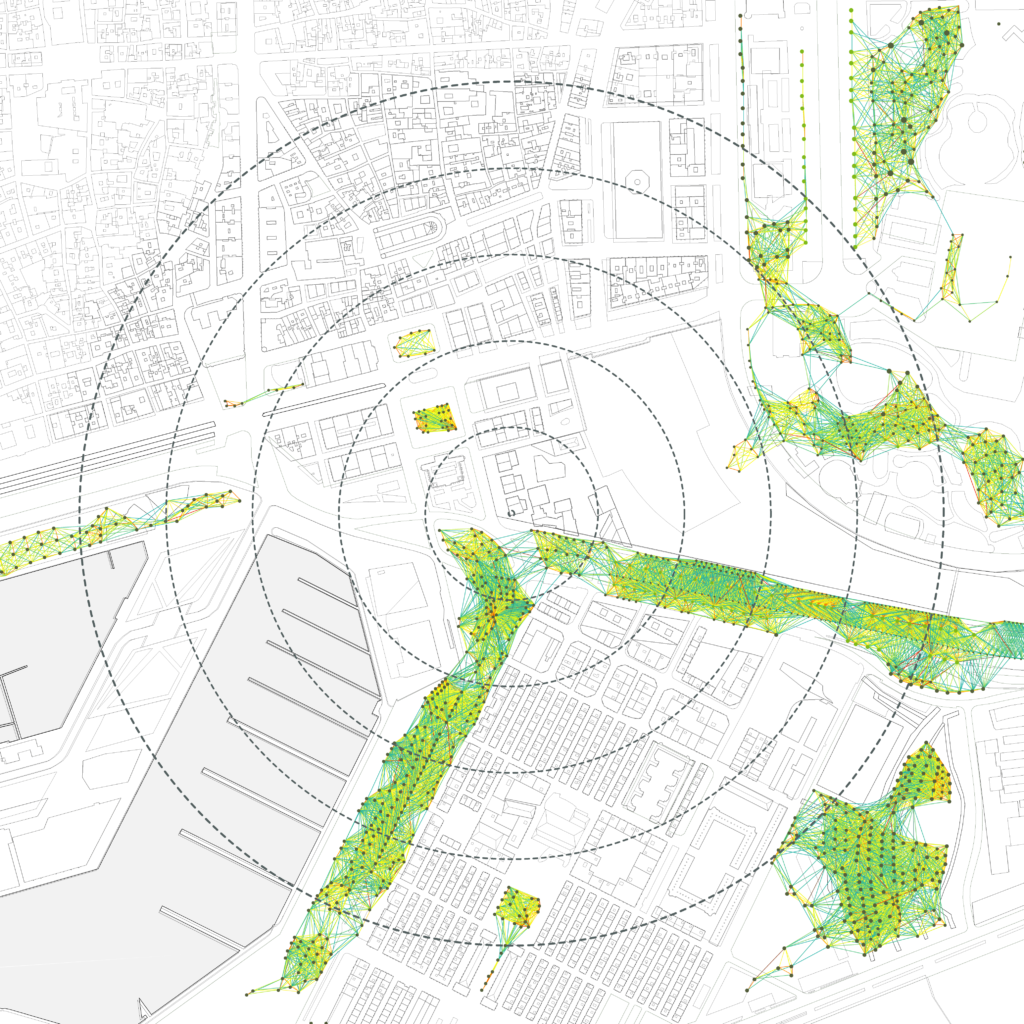
Sun Hours for Environmental Condition
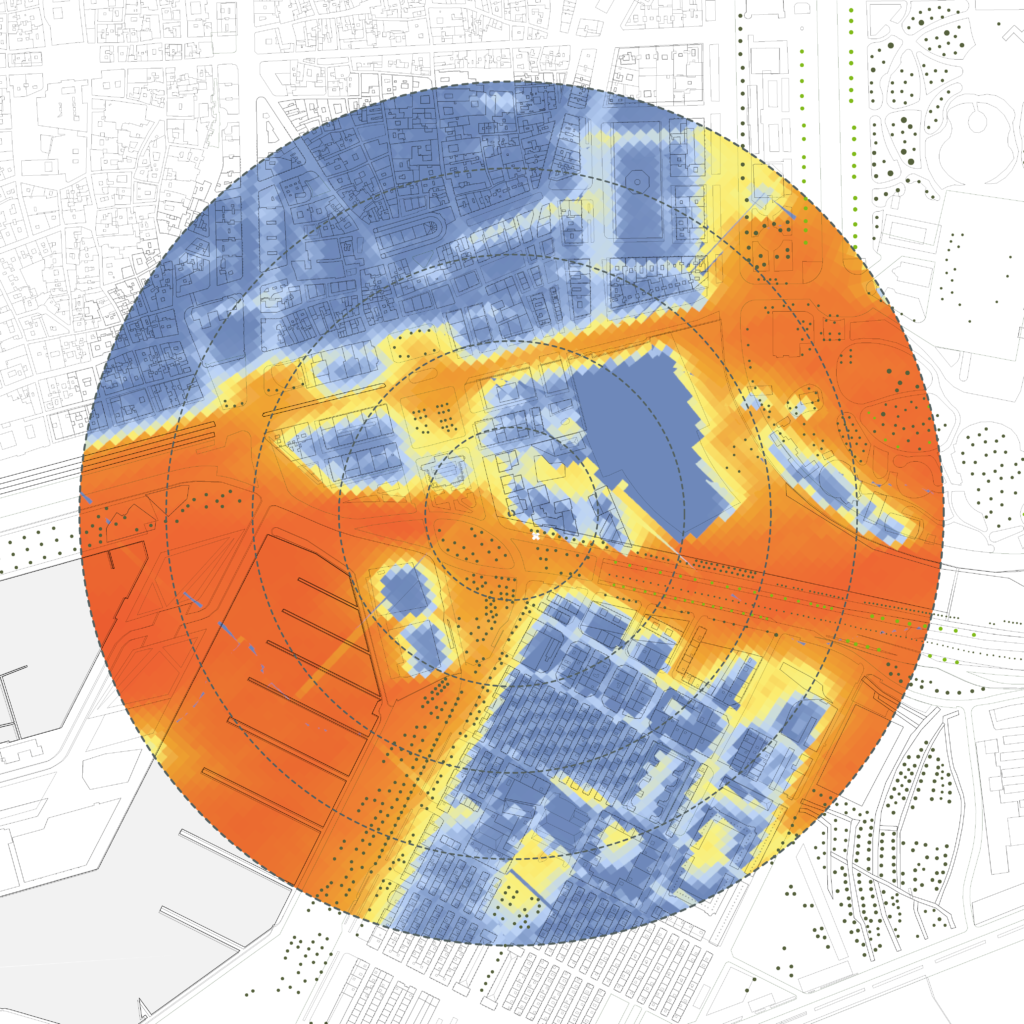
Path Walked for Growth Direction
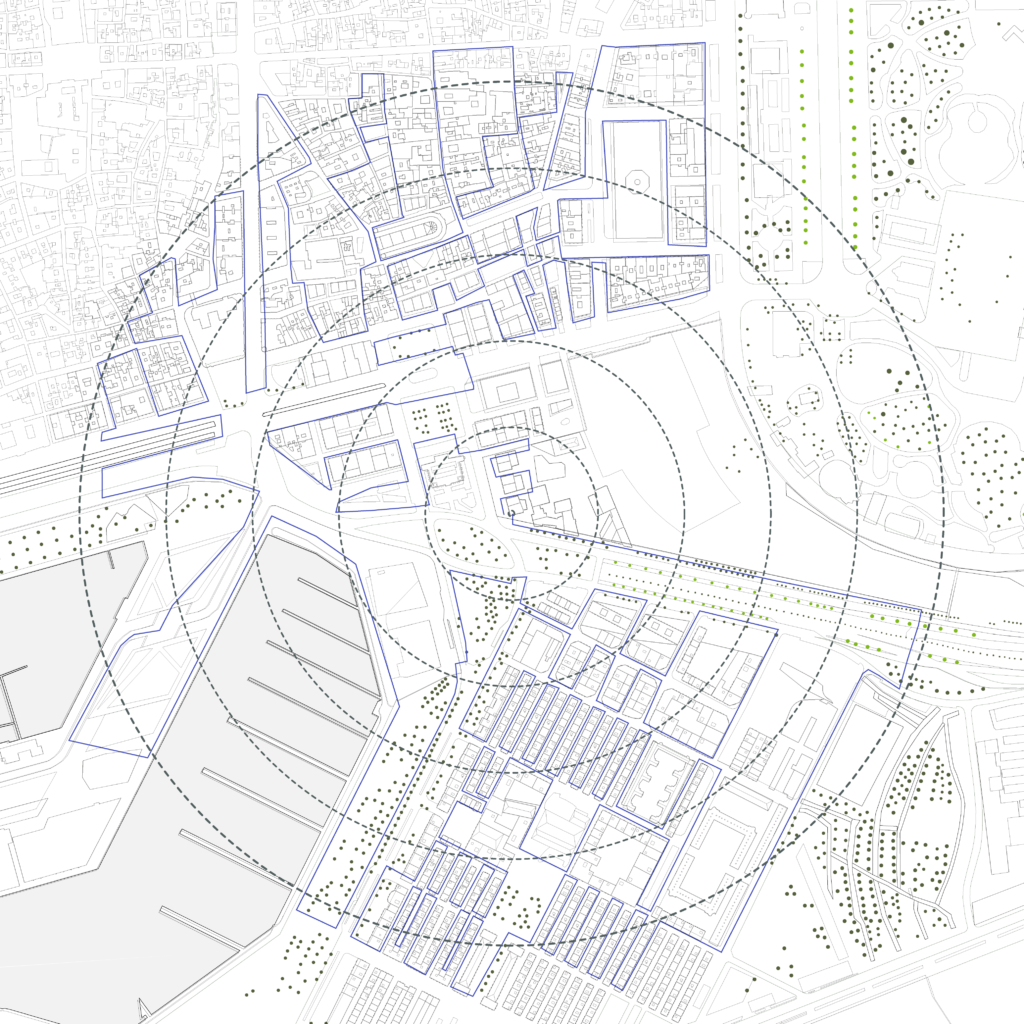
Growth Pattern
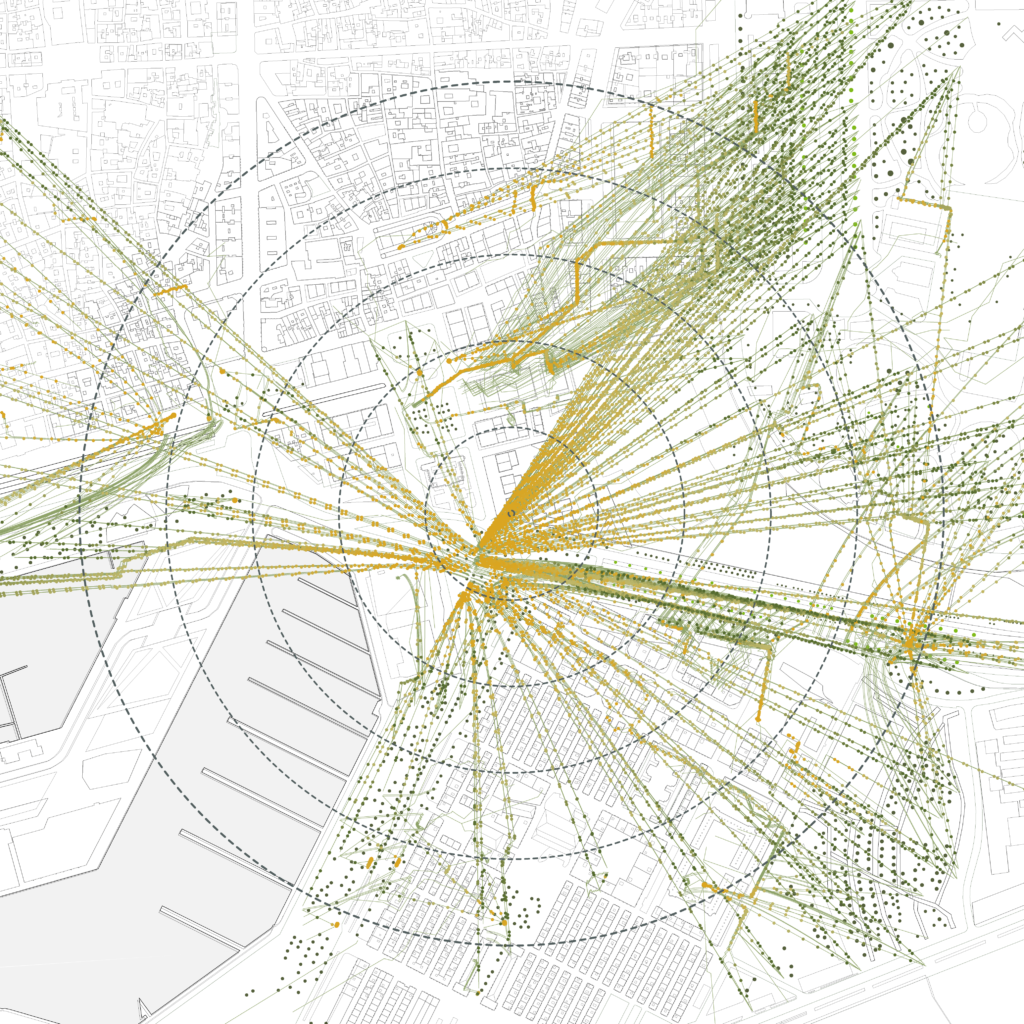
Zoom | 500m
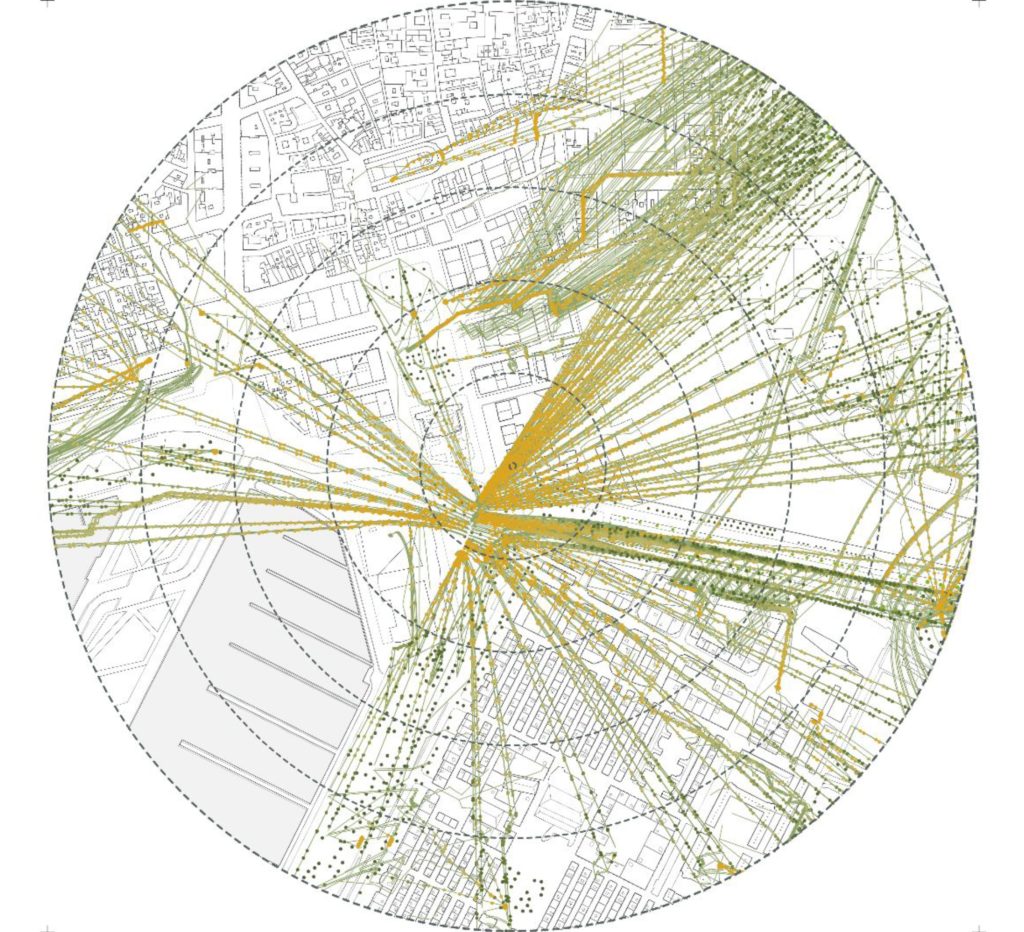
Zoom | 400m
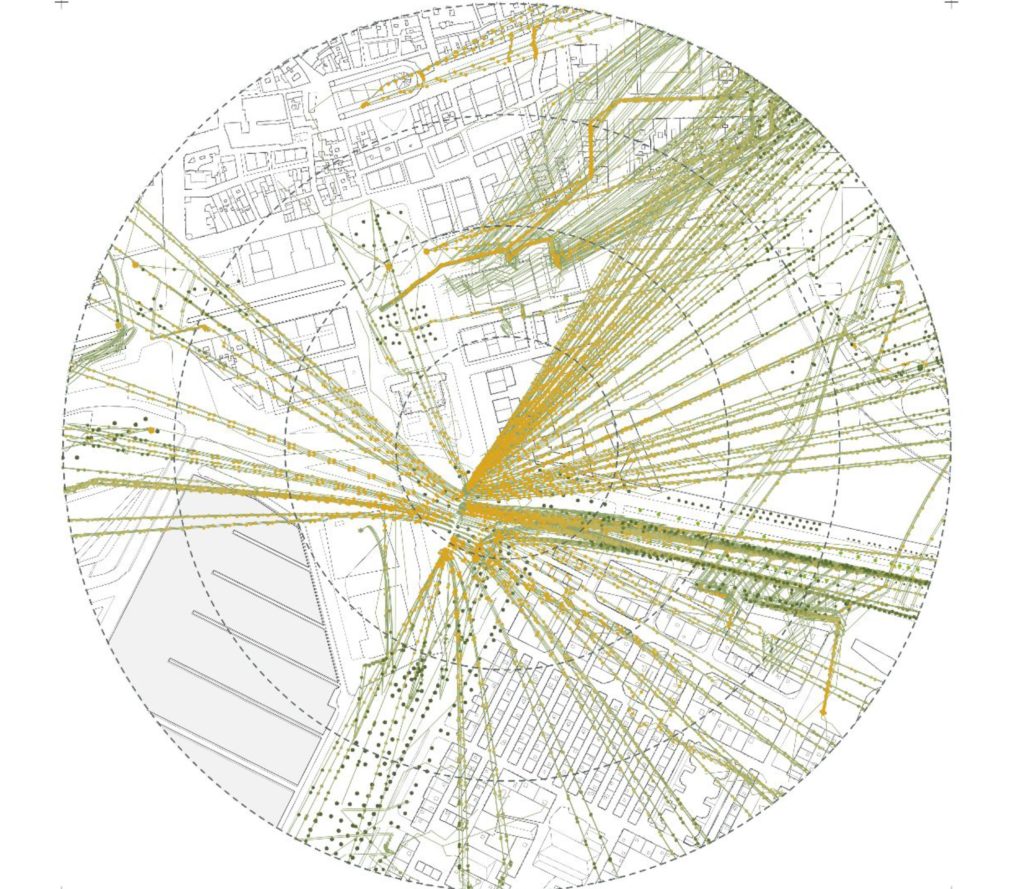
Zoom | 300m
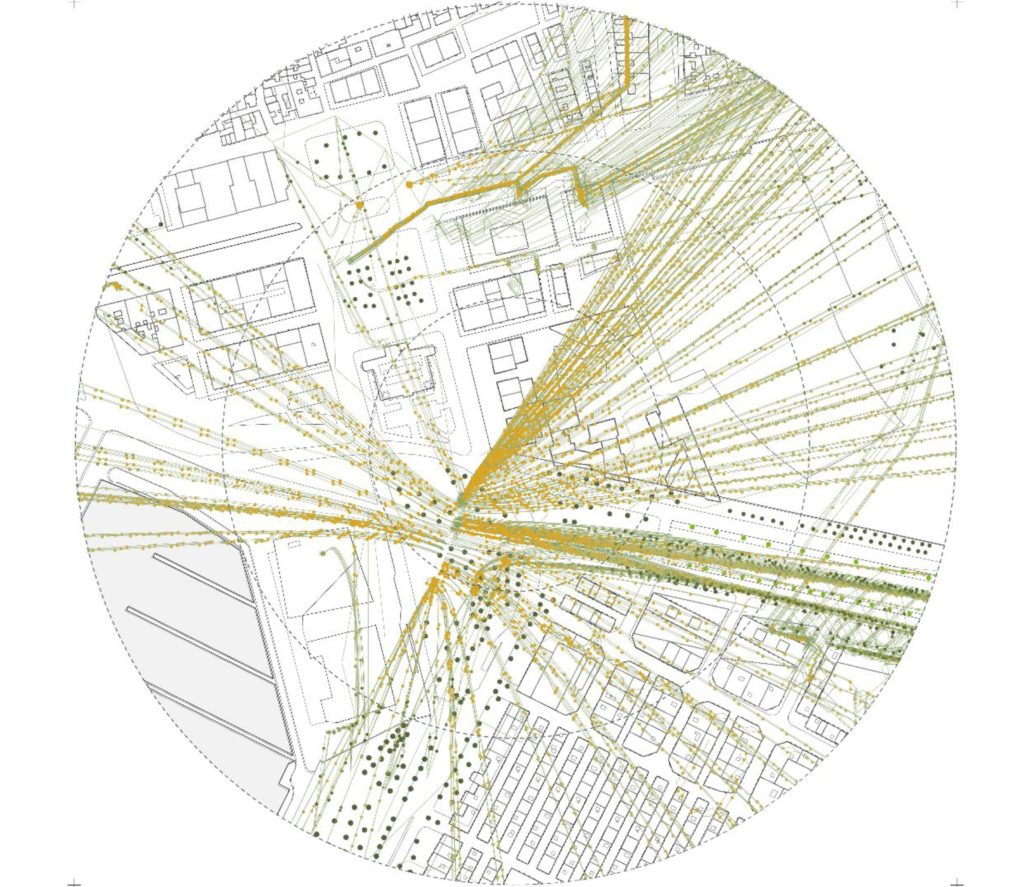
Zoom | 200m
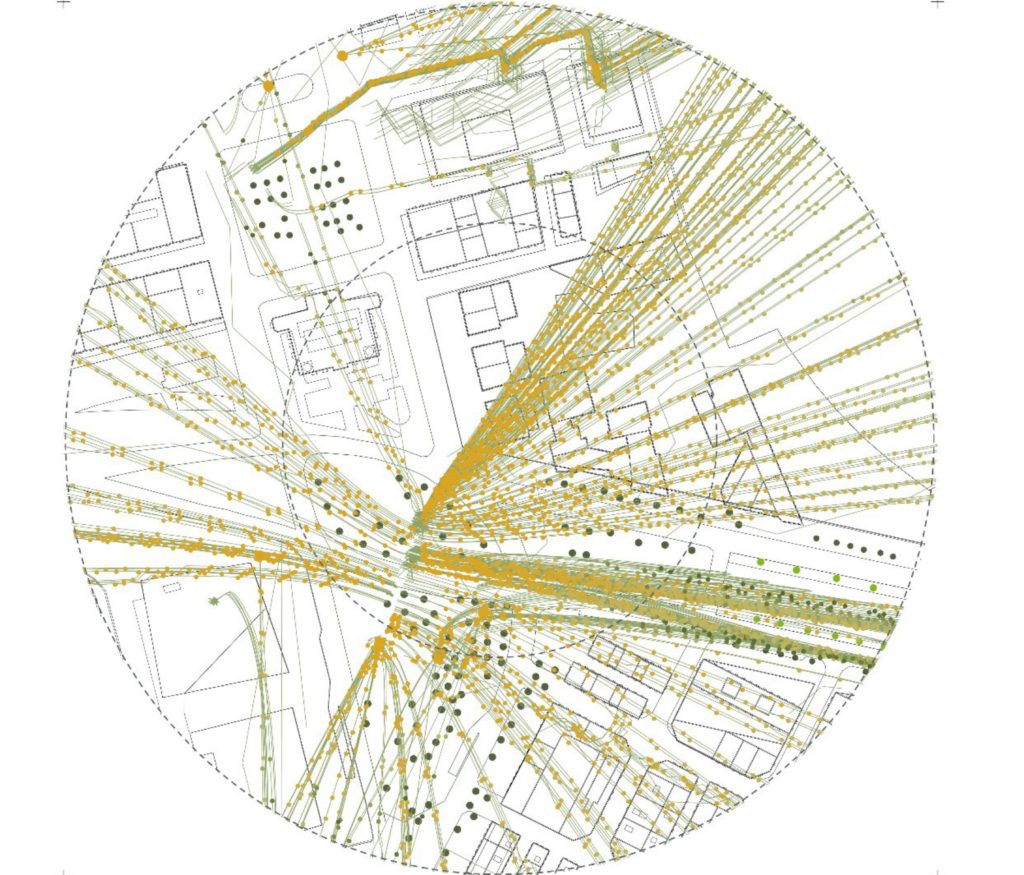
Zoom | 100m
